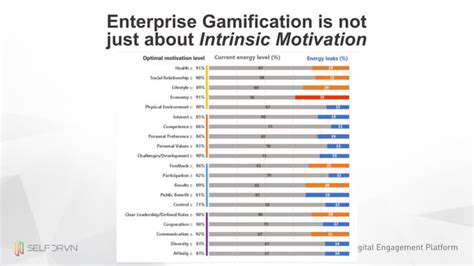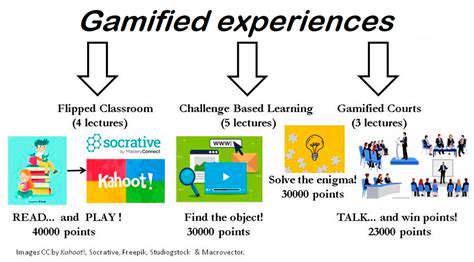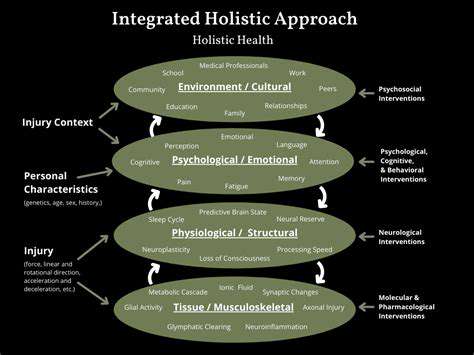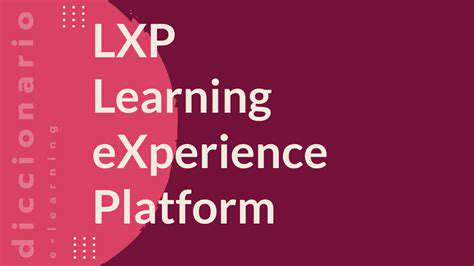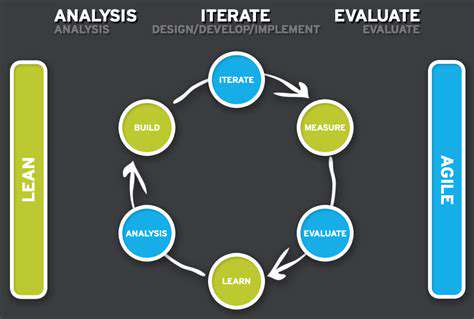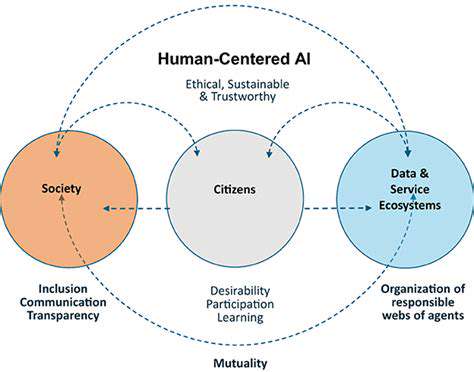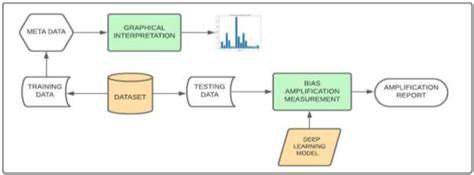AI in Assessment: Automating Feedback and Grading
AI is revolutionizing the grading process, offering educators a more efficient and potentially more objective approach to evaluating student work. By automating tedious tasks like identifying key concepts or recognizing patterns in student writing, AI tools can free up valuable time for teachers to focus on more nuanced aspects of education, such as providing personalized feedback and fostering student engagement. This streamlining of the grading process can significantly enhance the overall learning experience.
The implementation of AI in grading systems also allows for immediate feedback, enabling students to identify areas needing improvement and to adjust their learning strategies in real-time. This immediate, data-driven approach to learning can lead to a more dynamic and responsive educational environment, fostering a better understanding of concepts and ultimately leading to improved student outcomes.
Personalized Feedback for Enhanced Learning
AI systems can analyze student work in a way that goes beyond simple correctness. They can identify specific areas where students are struggling and offer tailored feedback, highlighting specific strengths and weaknesses. This personalized approach is invaluable, as it allows educators to address individual learning needs and provide more effective support for each student.
This individualized approach also caters to diverse learning styles and paces. By understanding how each student processes information and responds to challenges, AI-powered tools can help educators adjust their teaching strategies to maximize learning outcomes for every student. The result is a more inclusive and student-centric learning environment.
Accuracy and Objectivity in Grading
One significant benefit of AI in grading is its ability to maintain a high degree of accuracy and objectivity. AI systems are trained on vast datasets of student work, allowing them to identify patterns and assess responses with a level of consistency that can be challenging for human graders to achieve, particularly when dealing with large class sizes or high volumes of assignments.
This objectivity helps to reduce bias in grading and ensures that each student's work is evaluated fairly and consistently, regardless of the teacher or the specific assignment. Ultimately, this contributes to a more equitable and transparent assessment process.
Improving Efficiency and Time Management
AI-powered tools can significantly reduce the time spent on grading, allowing educators to dedicate more time to other crucial aspects of teaching, such as lesson planning, student interaction, and providing individualized support. This increased efficiency allows teachers to focus on the broader educational experience, fostering a more engaging and effective learning environment.
The automation of routine grading tasks enables teachers to spend more quality time with students, providing individualized attention and addressing their specific needs. This increased interaction can lead to stronger student-teacher relationships and a more supportive learning environment, ultimately leading to better academic outcomes.
Challenges and Considerations in Implementation
While AI offers significant advantages in grading, it's essential to acknowledge the potential challenges and considerations involved in its implementation. Issues such as data privacy, algorithmic bias, and the need for proper training and ongoing support for educators are crucial aspects to address. Carefully addressing these potential pitfalls is essential to ensure AI tools are implemented effectively and ethically in educational settings.
Furthermore, the integration of AI into grading systems must be approached thoughtfully, ensuring that it complements, rather than replaces, the essential human element in education. Human teachers bring invaluable skills in critical thinking, creativity, and emotional intelligence, and AI tools should augment these strengths, not diminish them. A balanced approach is key to successful integration.
Beyond the Grade: Utilizing AI for Deeper Insights
Beyond Traditional Metrics: Unveiling Student Potential
AI-powered assessment tools can move beyond simply measuring grades and delve into the deeper aspects of student learning. By analyzing patterns in student work, AI can identify areas where students excel and pinpoint specific knowledge gaps. This allows educators to tailor instruction and provide targeted support, fostering a more personalized and effective learning experience. Furthermore, this analysis can reveal learning styles and approaches that are not always apparent through traditional testing methods.
This data-driven approach allows for a more nuanced understanding of student performance, moving beyond simple pass/fail or numerical scores. It provides teachers with critical insights into individual student needs, enabling them to adapt their teaching methods and provide more effective interventions.
Personalized Learning Pathways: Tailoring Instruction to Individual Needs
AI algorithms can analyze vast amounts of student data, including performance on previous assignments, engagement levels, and preferred learning styles, to create personalized learning pathways. This means that students can receive tailored instruction that directly addresses their specific needs and learning pace. Instead of a one-size-fits-all approach, AI facilitates customized learning experiences, optimizing individual student outcomes.
By identifying individual learning gaps and strengths, AI-driven systems can recommend specific resources, activities, and learning materials. This allows students to focus on areas requiring more attention while reinforcing their existing knowledge.
Automated Feedback Loops: Accelerating Learning and Growth
AI tools can automate the process of providing feedback on assignments and assessments. This allows teachers to provide timely and constructive feedback to students, enabling them to understand their mistakes and improve their performance. This automated feedback loop significantly reduces the time teachers spend on grading, freeing them up to focus on other crucial tasks.
Automated feedback also provides more consistent and objective evaluations, minimizing bias and ensuring that all students receive the same level of support and guidance in their learning journey. This acceleration of learning and growth leads to more engaged and motivated students.
Early Intervention and Support: Identifying Struggling Students Early
AI's ability to identify patterns and trends in student data allows for the early detection of struggling students. By analyzing performance across multiple assessments and assignments, AI can identify students who are at risk of falling behind and flag them for early intervention. Early intervention programs are crucial for preventing students from experiencing academic difficulties and ensuring they receive the necessary support to succeed.
Cost-Effectiveness and Efficiency: Optimizing Resource Allocation
Implementing AI-powered assessment systems can be a cost-effective way to improve educational outcomes. By automating grading and feedback processes, AI can free up valuable teacher time, allowing them to focus on more complex tasks such as curriculum development and student interaction. This efficiency leads to improved resource allocation, allowing schools to allocate resources more effectively and efficiently.
Improved Accessibility and Inclusivity: Removing Barriers to Learning
AI-powered assessment tools can also help to improve accessibility and inclusivity in education. By adapting to different learning styles and providing individualized support, AI can help ensure that all students, regardless of their background or learning needs, can access and benefit from the learning process. These tools can also be helpful for students with disabilities, offering customized support and alternative assessment methods.
Data-Driven Decision Making: Enhancing Educational Policies
The vast amounts of data generated by AI-powered assessment tools can provide valuable insights for educational policy decisions. By analyzing trends and patterns in student performance across different demographics and learning environments, policymakers can develop more effective educational policies and strategies. This data-driven approach can help to address inequities and ensure that all students have access to high-quality education.
